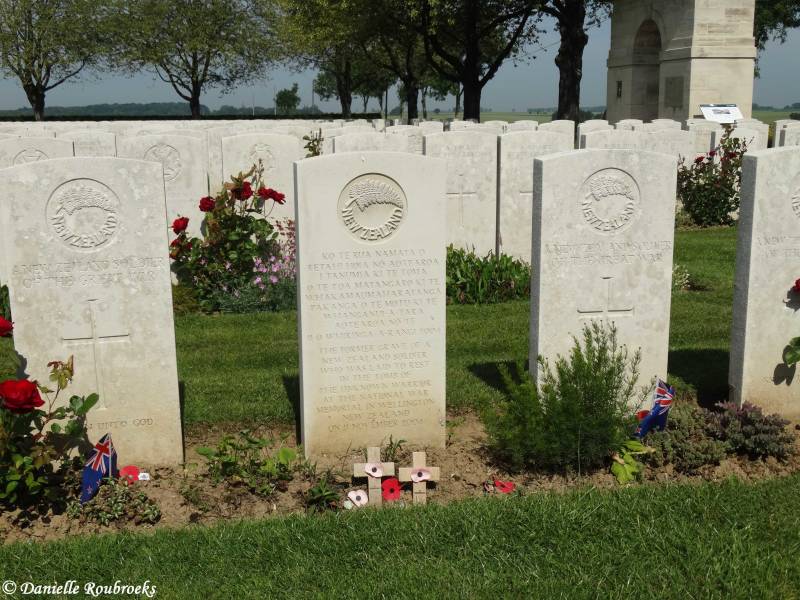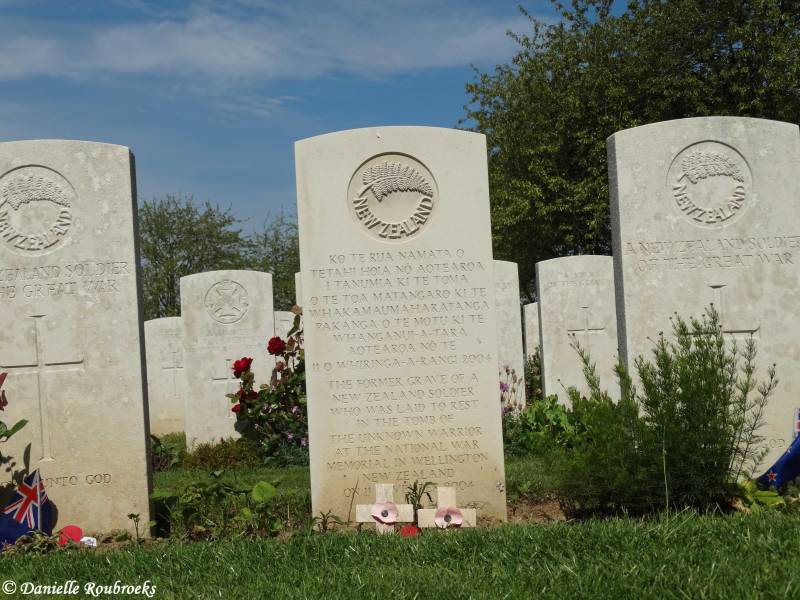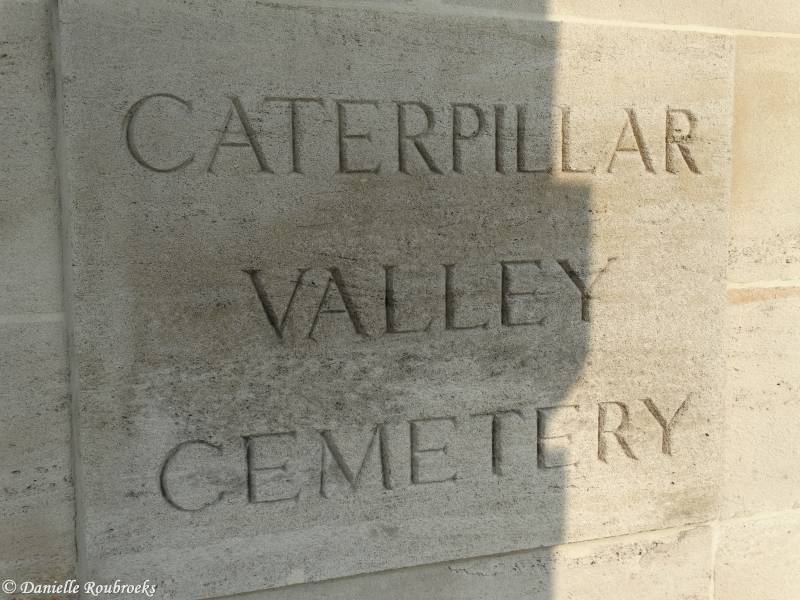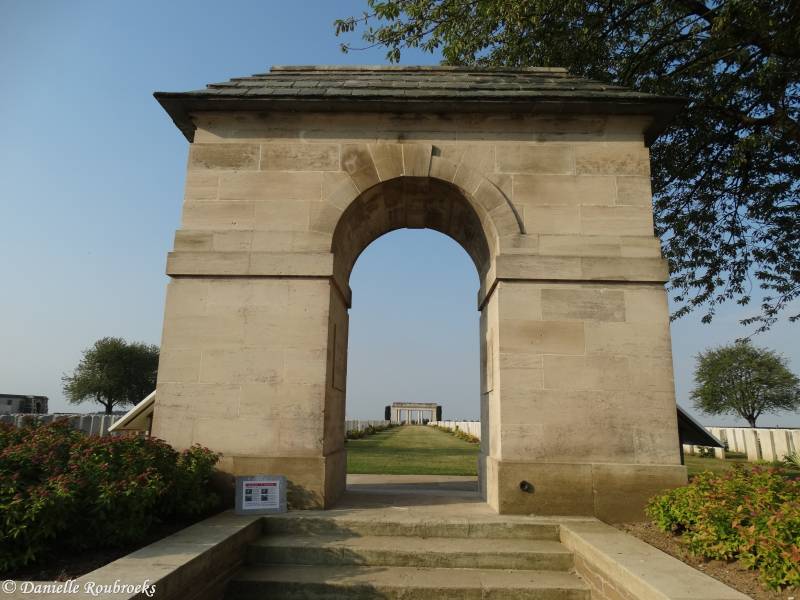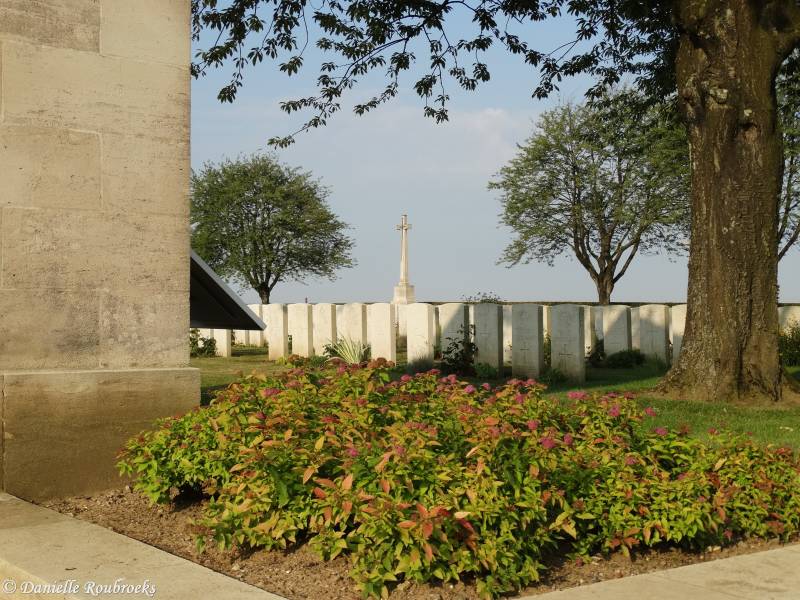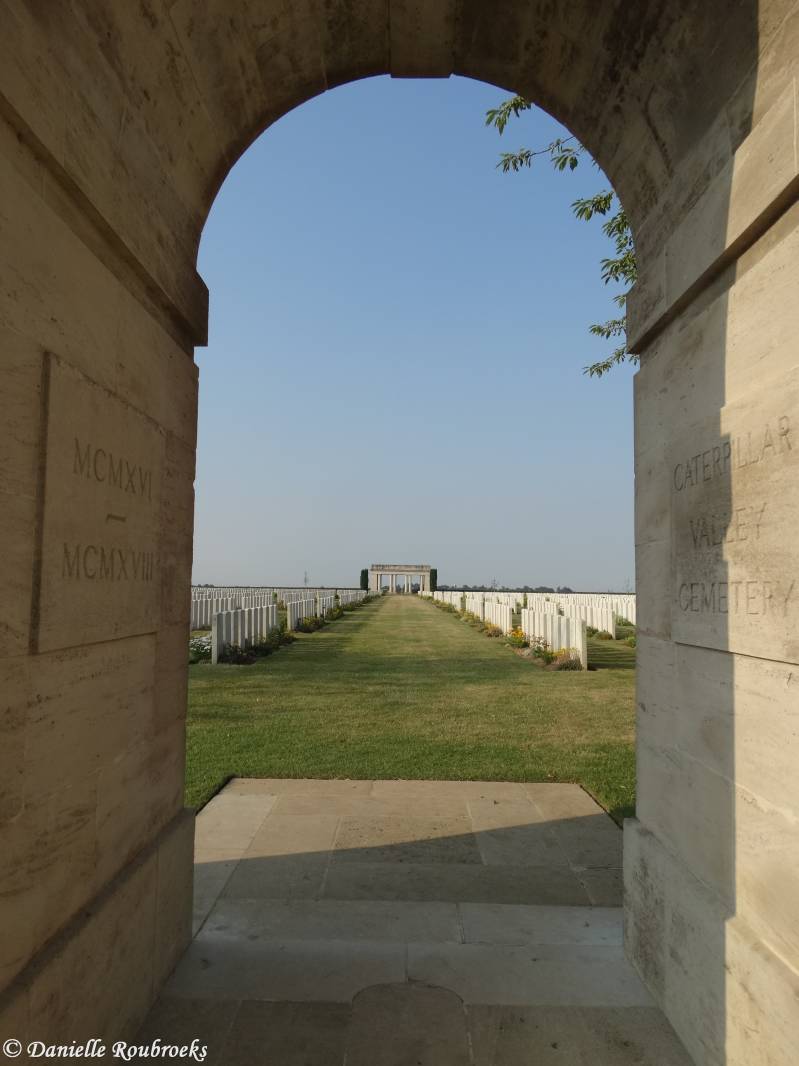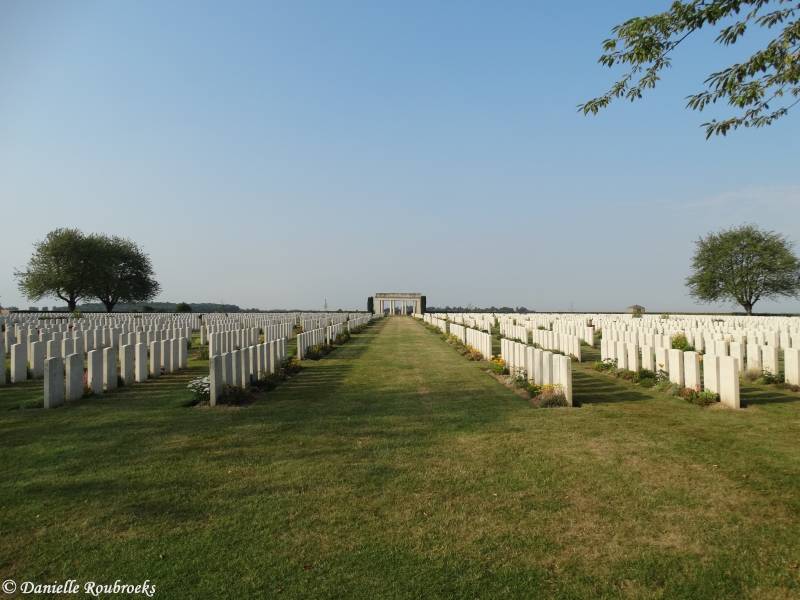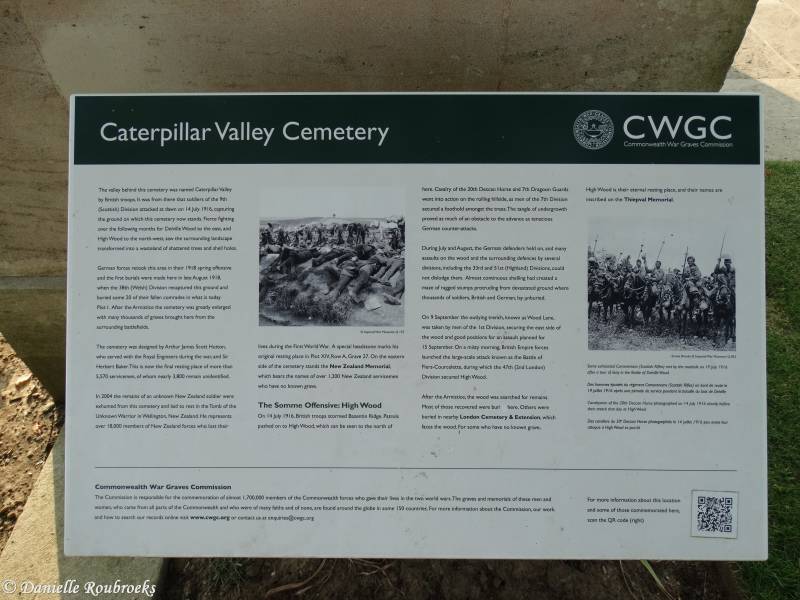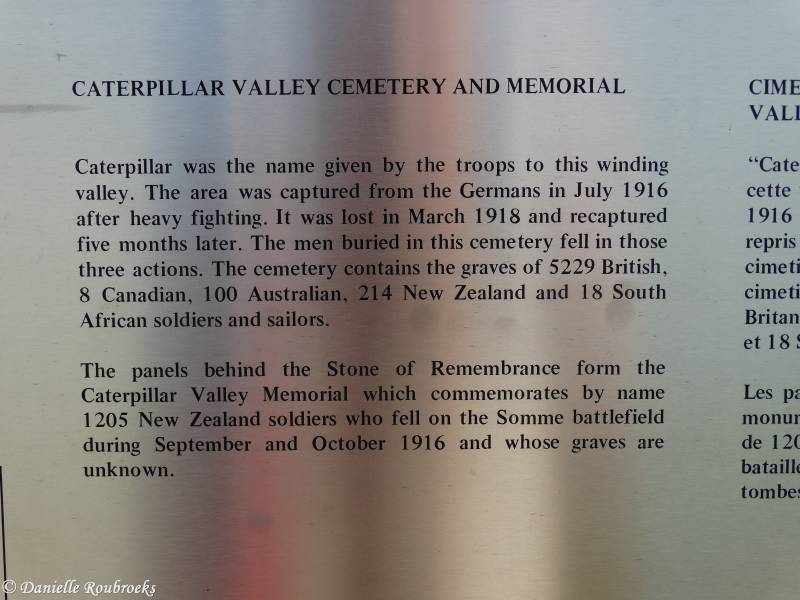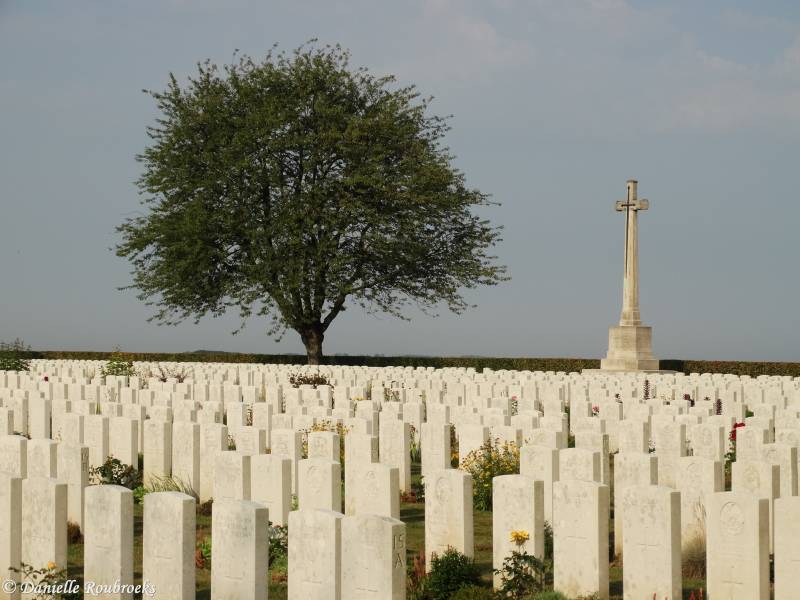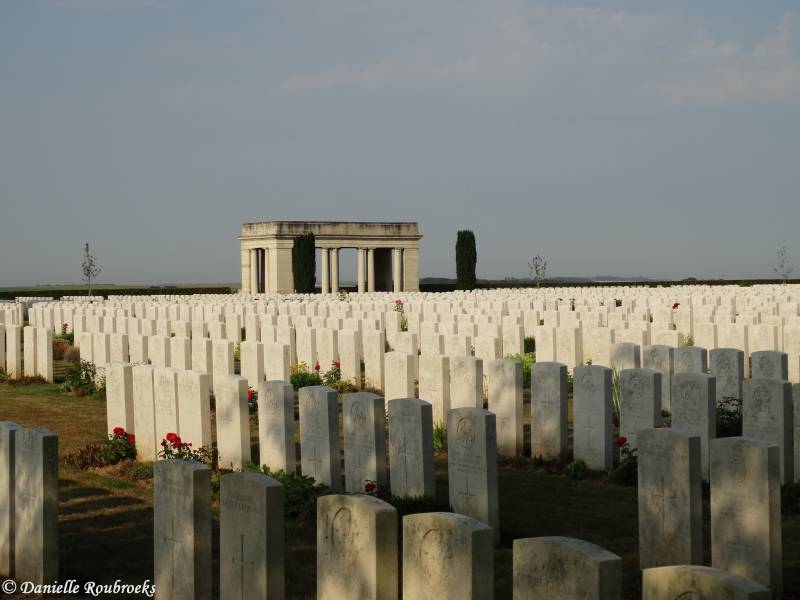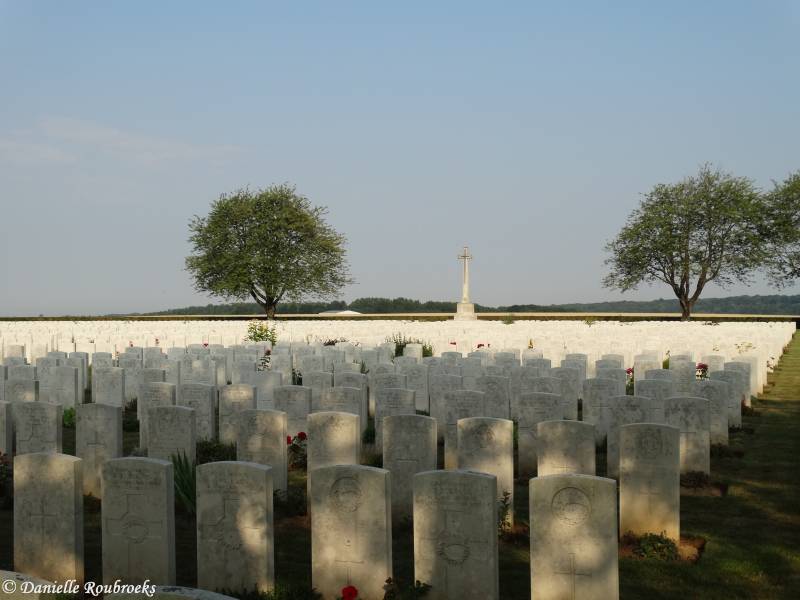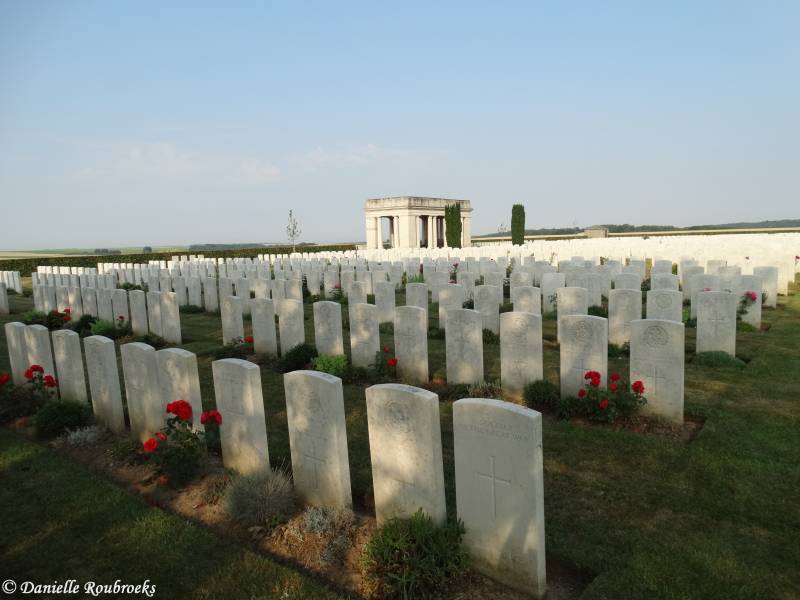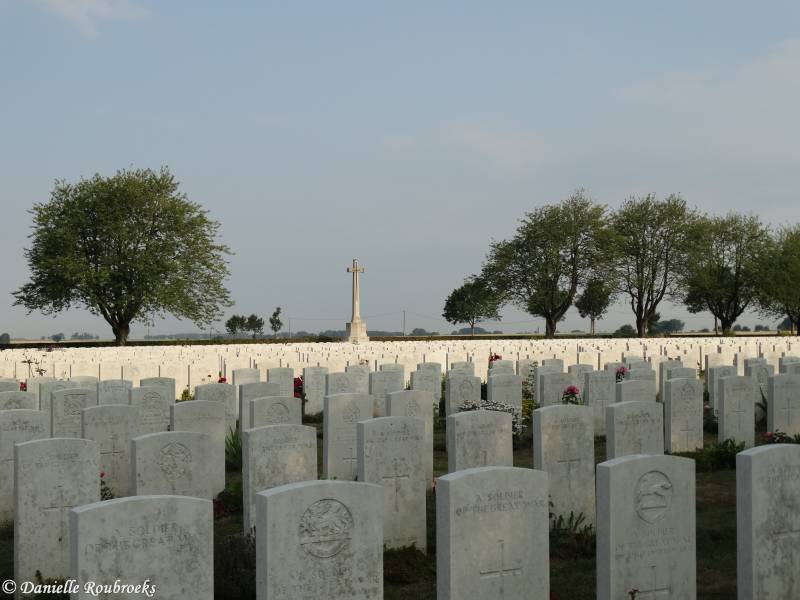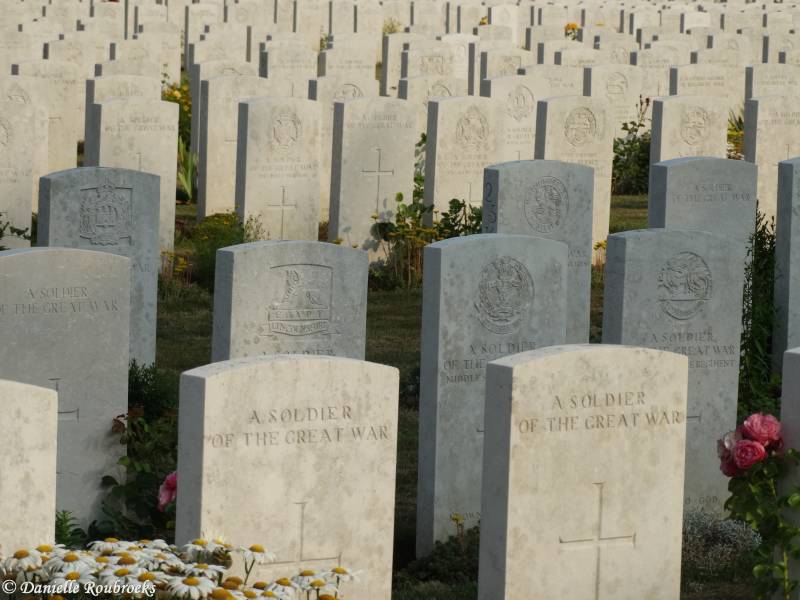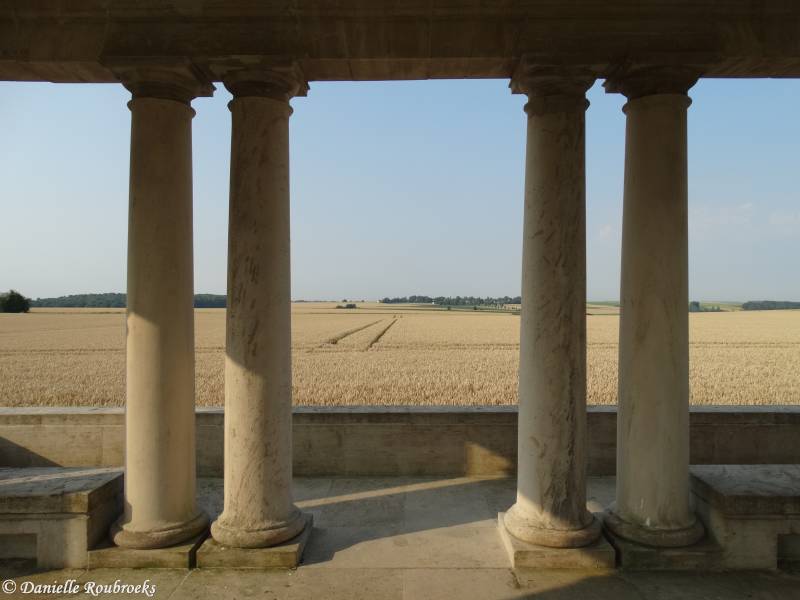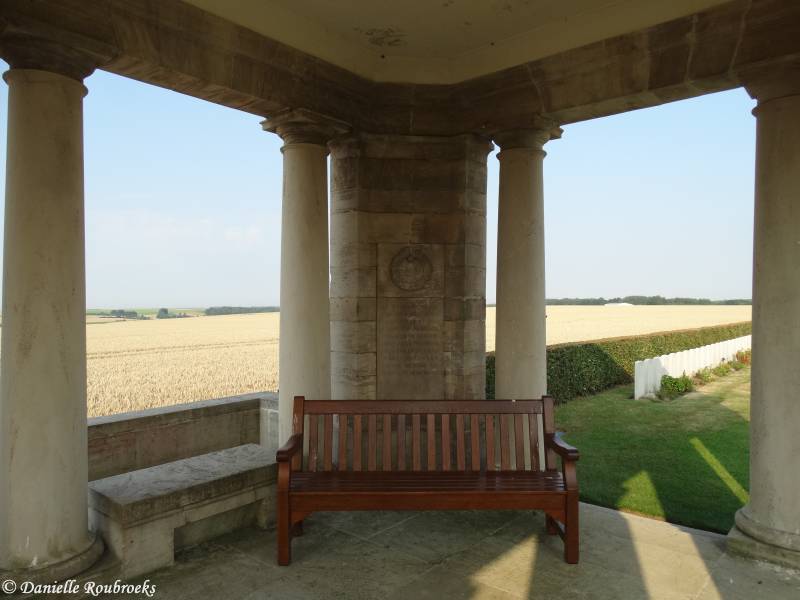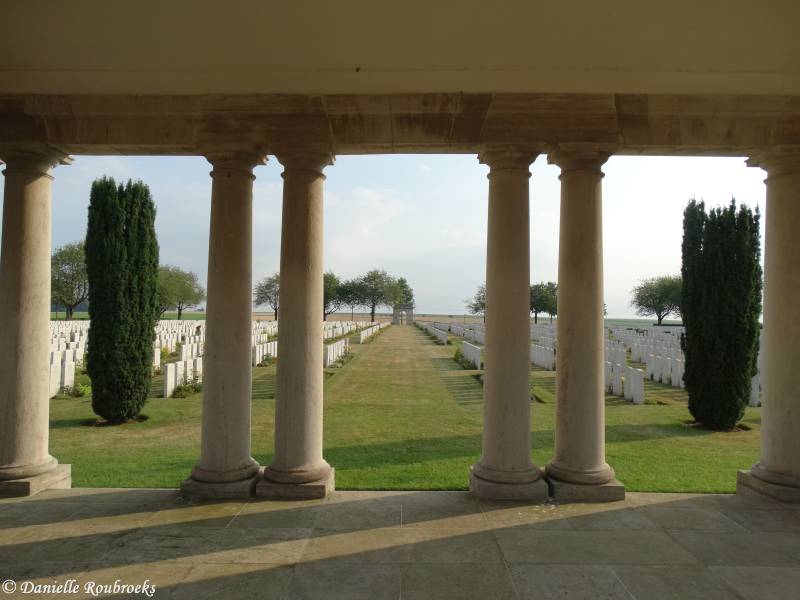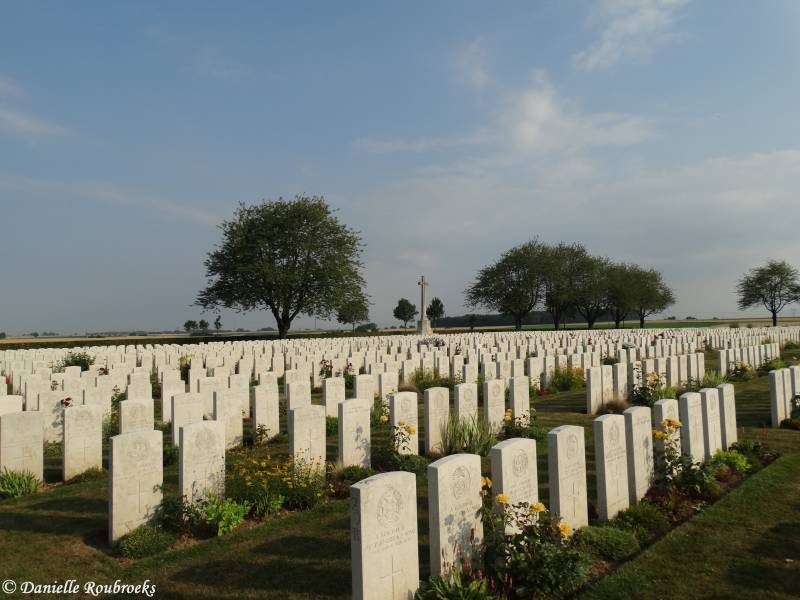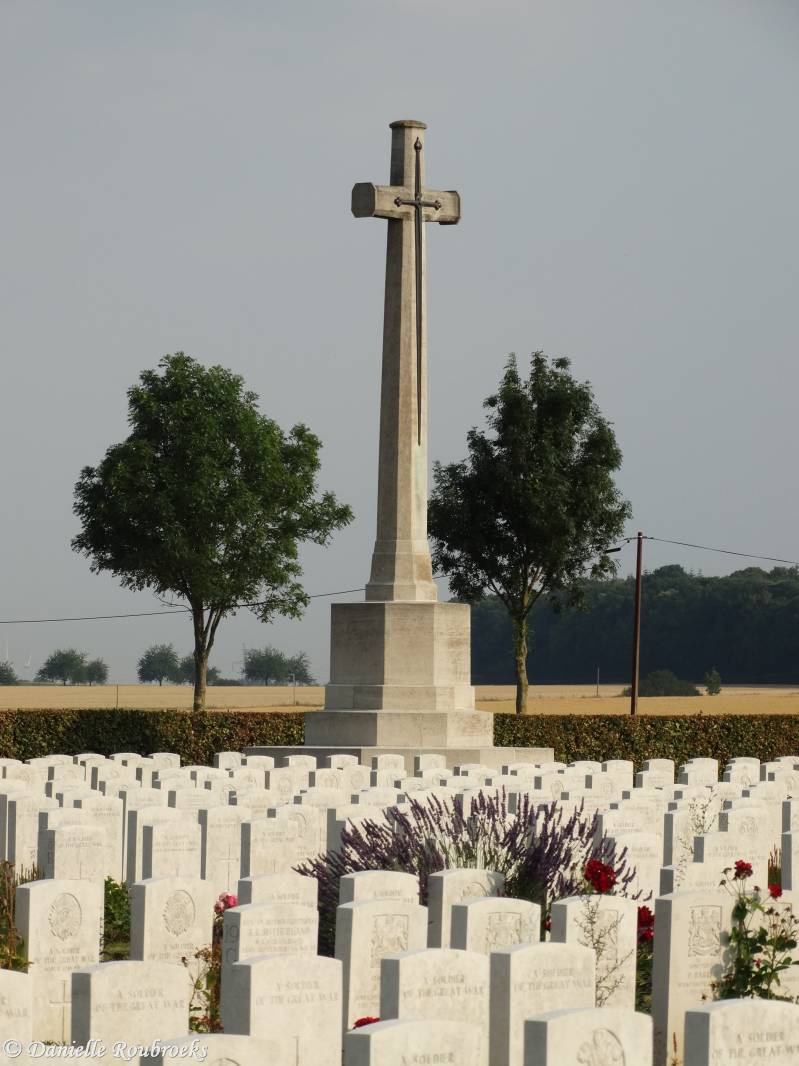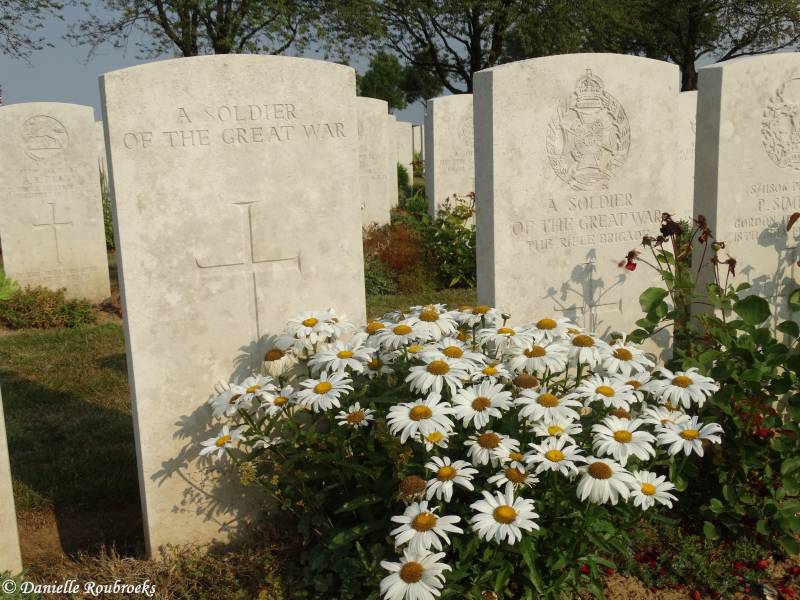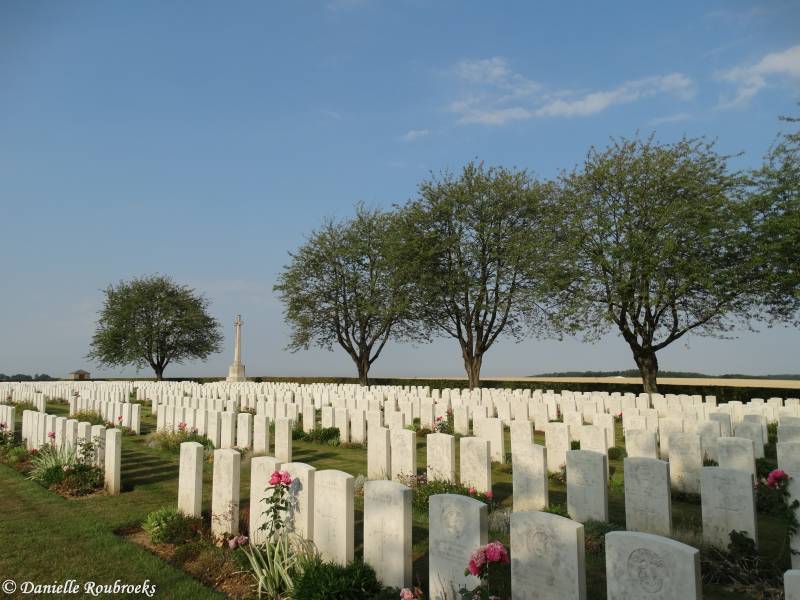Caterpilar Valley Cemetery, Longueval
Historical Information (Source: CWGC)
Caterpillar Valley was the name given by the army to the long valley which runs West to East, past "Caterpillar Wood", to the high ground at Guillemont. Longueval village is on the Northern crest of this valley and 500 metres West of the village, on the South side of the road to Contalmaison, is Caterpillar Valley Cemetery. Caterpillar Valley was captured during a successful night assault by the 3rd, 7th and 9th Divisions on Bazentin Ridge on 14 July 1916. It was lost in the German advance of March 1918 and recovered by the 38th (Welsh) Division on 28 August 1918, when a little cemetery was made (now Plot 1 of this cemetery) containing 25 graves of the 38th Division and the 6th Dragoon Guards. After the Armistice, this cemetery was hugely increased when the graves of more than 5,500 officers and men were brought in from other small cemeteries, and the battlefields of the Somme. The great majority of these soldiers died in the autumn of 1916 and almost all the rest in August or September 1918.
Caterpilar Valley Cemetery now contains 5,573 Commonwealth burials and commemorations of the First World War. 3,798 of the burials are unidentified but there are special memorials to 32 casualties known or believed to be buried among them, and to three buried in McCormick's Post Cemetery whose graves were destroyed by shell fire. Both cemetery and memorial were designed by Sir Herbert Baker.
Served with
- United Kingdom (1590)
- New Zealand (125)
- Australian (55)
- South African (7)
Served in
- Army (1774)
- Air Force (2)
- Navy (1)
On the 6th November 2004, the remains of an unidentified New Zealand soldier were removed from this cemetery and entrusted to New Zealand at a ceremony held at the Longueval Memorial, France. The remains had been exhumed by staff of the Commonwealth War Graves Commission from Plot 14, Row A, Grave 27 and were later laid to rest within the Tomb of the Unknown Warrior, at the National War Memorial, Wellington, New Zealand.



